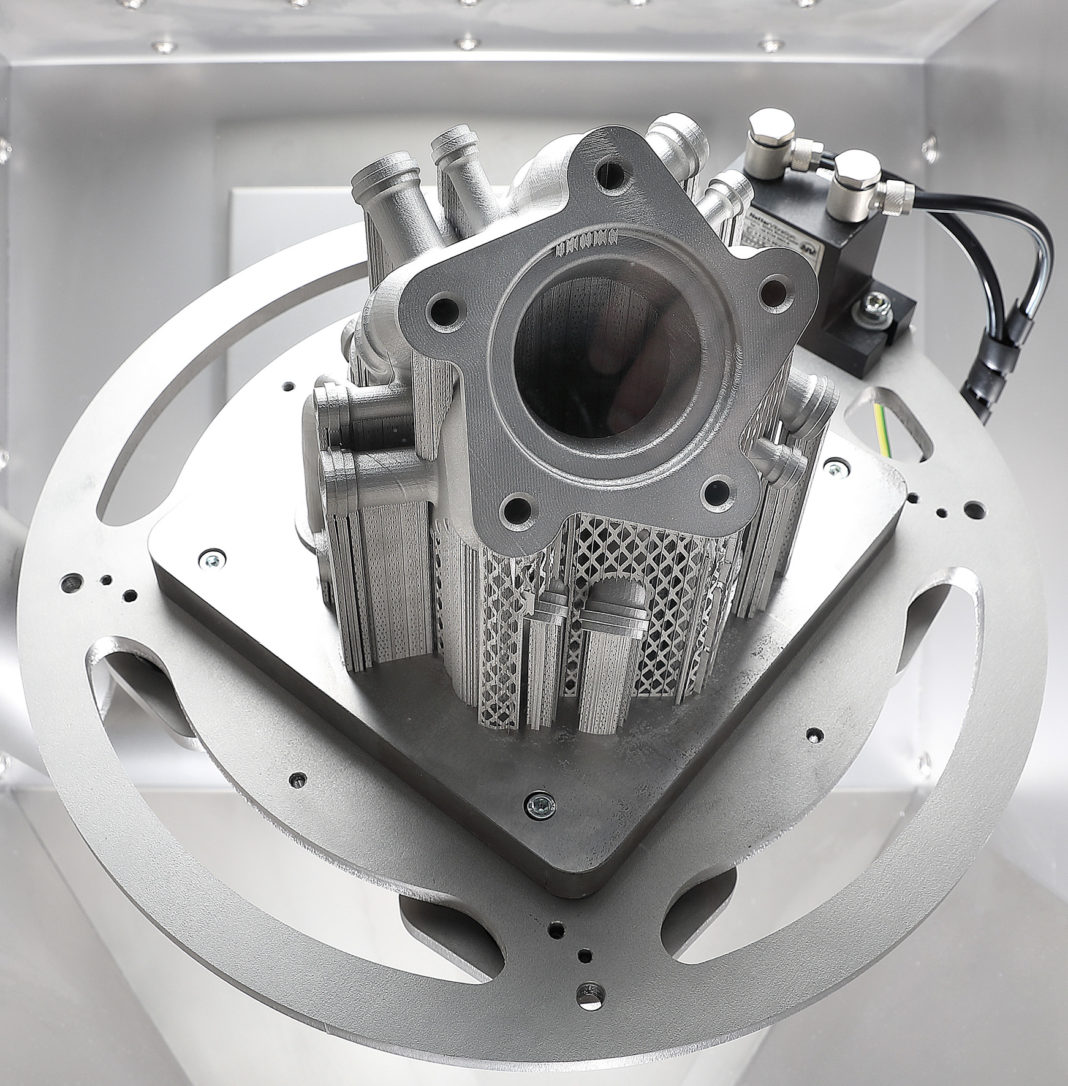Whether additive manufacturing is utilized for prototyping or serial production – throughput times can often be significantly reduced. Furthermore, products that previously consisted of several mounted parts, can now be manufactured as a single assembly-free object.
That is why additive manufacturing becomes increasingly important in producing small batches and prototypes as well as for Industry 4.0.
Utilization in industrial serial production is coming
There are several technologies for additive manufacturing, commonly referred to as 3D printing. In the following, focus will be placed on the process using metals.
In order to ensure the high quality requirements, various challenges in powder handling or process air handling in the production area must be met by AM system operators. This includes mastering the air situation and constant monitoring and ensuring the exact moisture concentration in the environment.
This is because the unwanted oxidation of the metal powder due to high air humidity poses is a potential threat to the quality of the final product and the process stability.
Traditional metallurgical processes – particularly sintering and metal additive manufacturing – require a dry atmosphere to ensure solid strength and integrity. That is why, ensuring the “right air conditions” is a decisive factor for the entire process.
In order to make the SLM process efficient and sustainable, for example, a holistic view of the process from the safe de-powdering of additively manufactured components to a qualified preparation of excess powder up to the return to the process is necessary. An important component of this processing is the drying of the powder. In addition, the process atmosphere in the process room must be as dry as possible.
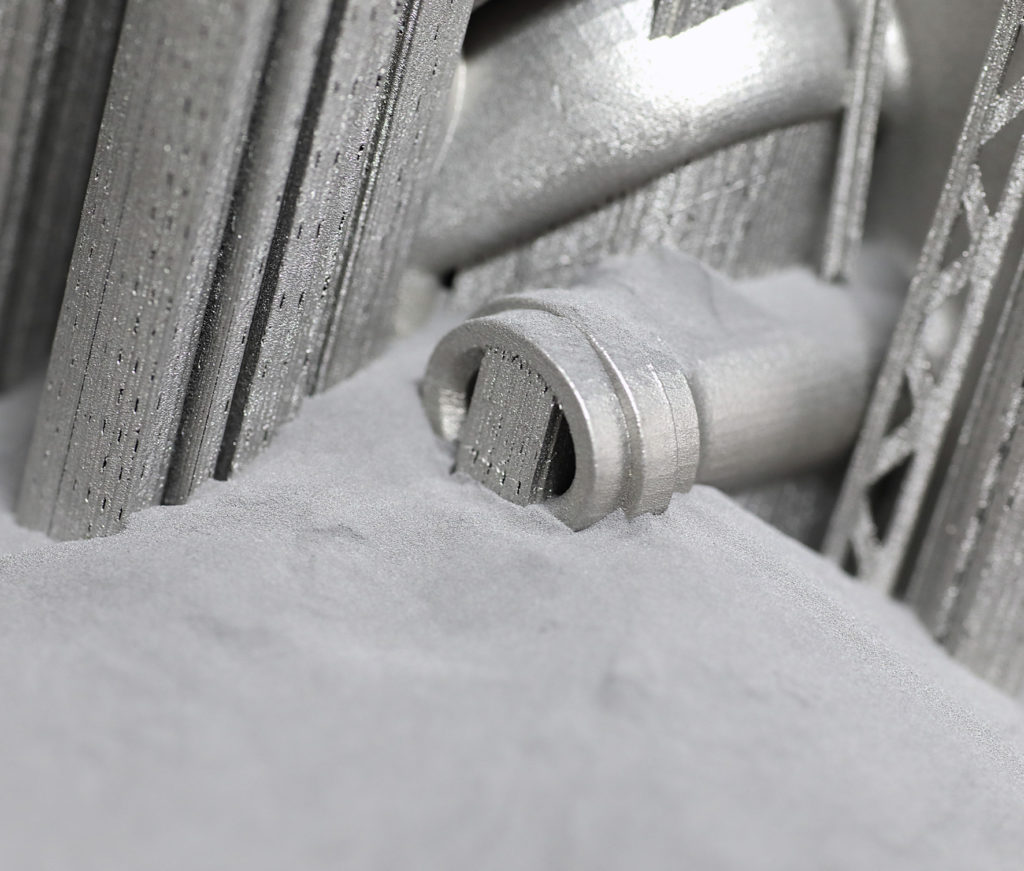
A highly efficient process air drying has a key function within a stable AM process. If the fine metal powders with particle sizes in the range between 20 to 40 µm absorb air humidity, they become unusable for sensitive SLM processes since they tend to clump and oxidize. A reliable high powder quality is essential for a reproducible component quality under constant production conditions.
Air drying as part of the ventilation concept
The requirements for process air drying for production room environments are in the range of 19-22 ° C with 10-40% adjustable relative humidity, which should be kept constant depending on the choice of powdered metal materials. This corresponds to a dew point down to -10 ° Ctd.
Conventional methods such as the condensation of water vapor on cooling registers are no longer sufficient to generate dry process air under these conditions. In order to reduce the residual moisture content of the air so far, sorptive processes are necessary.
Metal powders, unshielded from the surrounding atmosphere, tend to absorb moisture very strongly. Overall, this leads to a deterioration in the material, which can hardly be corrected within the AM/3D printing process, and thus requires a lengthy and costly post-processing or production. Therefore, the moisture content of the ambient air around the metal powder must be ensured at every point in the process.
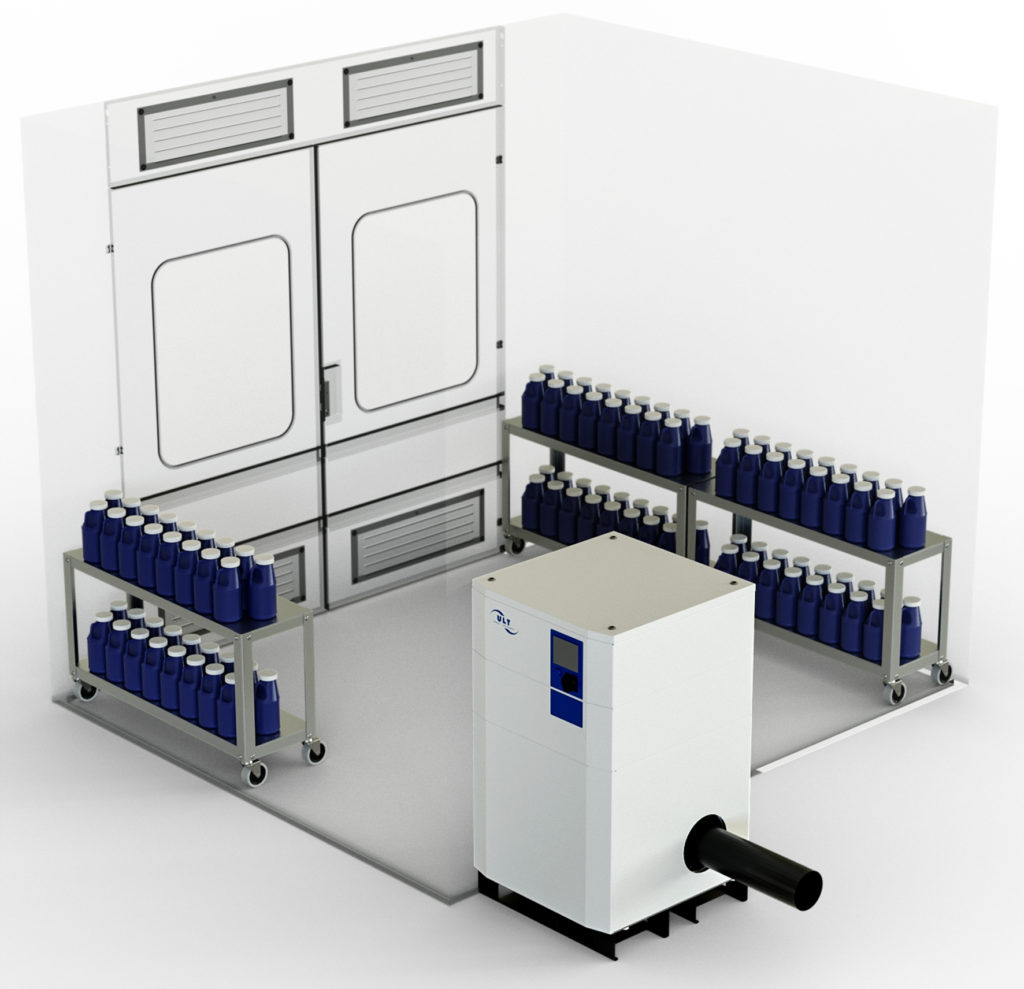
A main aspect of successfully installed concepts in the AM industry has been the air conditioning and drying of the production room. This ensures that the metal powder does not come into contact with excessive humidity, even when decanting, filling, extraction and other handling work on the machine, and that it can be reused at any time. In addition, the print job can also be continued after opening the process room in terms of air humidity and powder quality.
Sorption technology offers many advantages
The use of sorption dehumidifiers has proven to be particularly effective here. The moist air stream is passed through a rotating, adsorbent coated sorption wheel and dried. On the other side, the wheel is regenerated to effectively ensure the continuous treatment of the air to be dried. The water molecules in the extracted air are simultaneously driven out of the adsorbent continuously by means of desorption and conducted as adsorbate in a separate air flow from the system into the outside atmosphere. By expanding the ULT Dry-Tec® sorption module, for example with the precooler ULT Cool-Tec® V and the postcooler ULT Cool-Tec® N plus a post-heater, dew points of up to -65 ° Ctd and any temperature can be achieved. The precooler and postcooler modules can optionally be equipped with different filter elements of corresponding filter classes. Such low dew points, however, are hardly necessary for the storage of the metal powder.
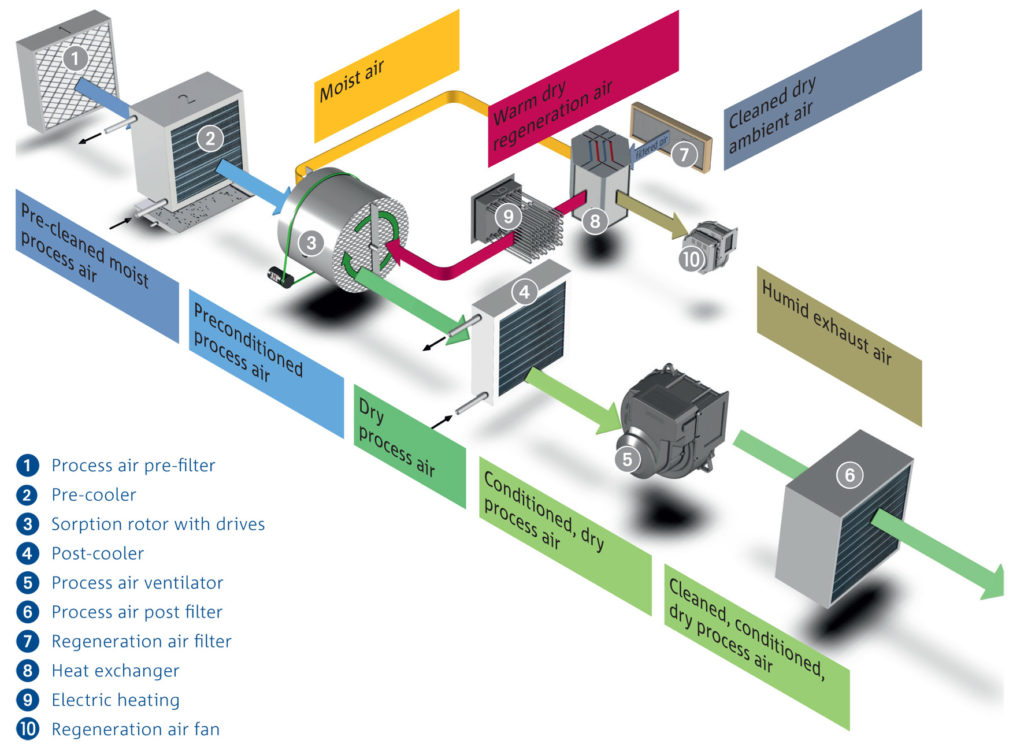
The process air drying system ULT Dry-Tec is a ready-to-connect, compact, modular device with a very high dehumidification performance and low energy consumption. This includes controllable fans for the process air flow and the regeneration air flow, as well as an integrated heat recovery.
The effective heat recovery system can save up to 35% of the power required to heat the air flow in the desorption circuit. The heat is obtained from the exhaust air flow and part of the heat of condensation contained therein. This otherwise unused energy directly heats the sucked-in regeneration air flow and, thus, helps to save energy when regenerating the sorption wheel.
The desiccant rotors used by ULT are non-flammable (flame index and smoke index = 0), resistant to corrosion and washable. For this purpose, particularly easy changeability and maintenance were kept in mind during the development process.
Based on the ULT Dry-Tec module concept, users can put together a system for air conditioning that matches the process requirements. This concept enables for flexible installation also of smaller individual system components in existing technical rooms, even where space is limited. Additionally, user may refer to the numerous options of the concept to adapt the system individually to their needs. For example, the on-site integration and control of the system via the building management system is available for many different systems.
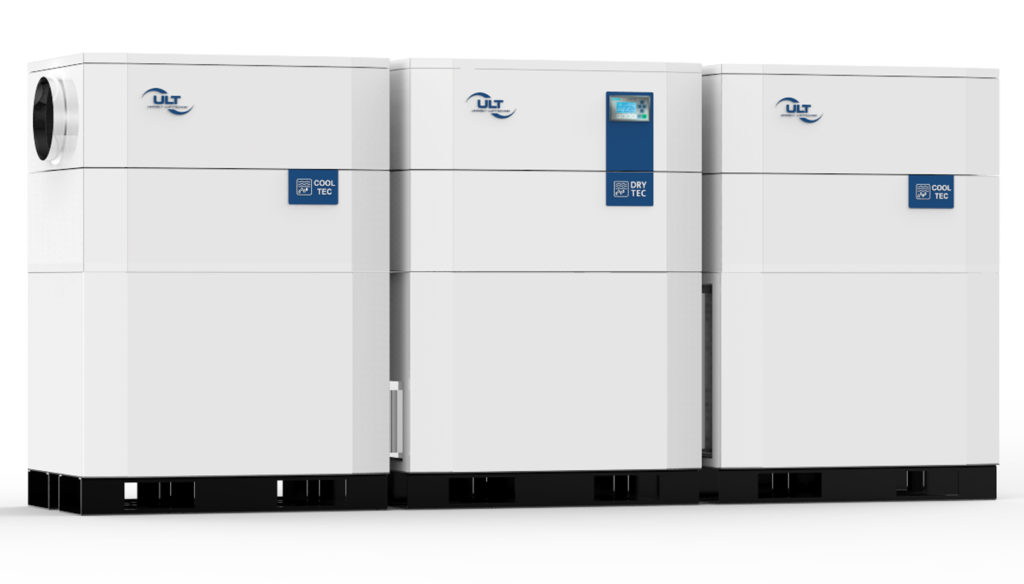
Image 5: Modular concept ULT Dry-Tec® with precooler and postcooler
Featured image: 3D printed part © Solukon – Remember, you can post job opportunities in the AM Industry on 3D ADEPT Media free of charge or look for a job via our job board. Make sure to follow us on our social networks and subscribe to our weekly newsletter : Facebook, Twitter, LinkedIn & Instagram ! If you want to be featured in the next issue of our digital magazine or if you hear a story that needs to be heard, make sure to send it to contact@3dadept.com



